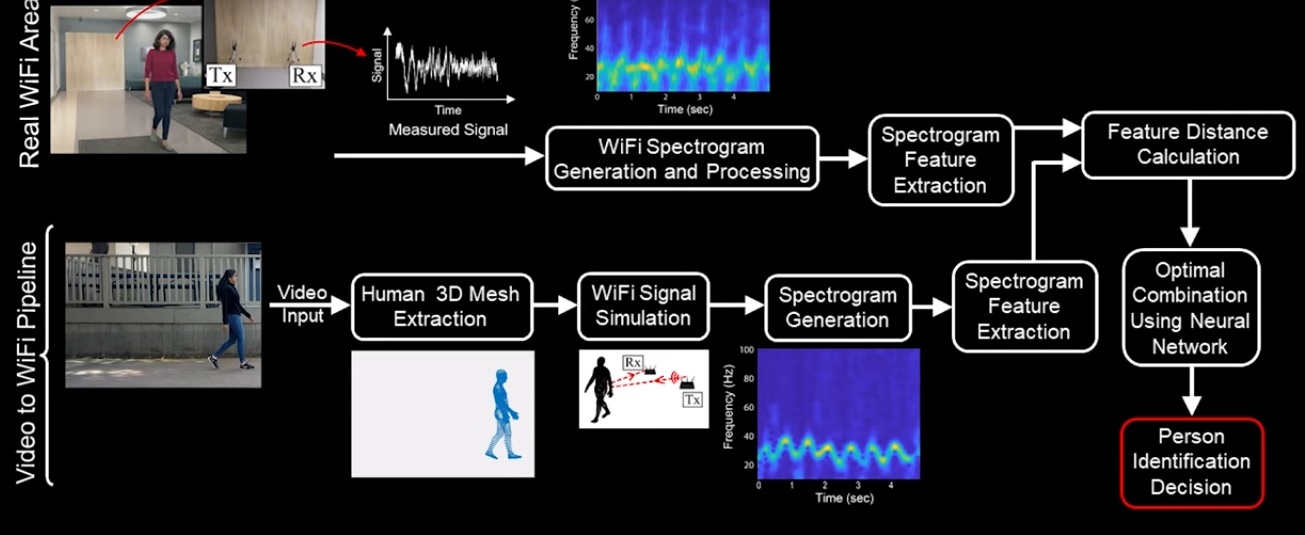IT Info
Understand Trend
XModal-ID: Project on Person Identification from Behind the Wall

Researchers, led by Professor Yasamin Mostofi in the lab of the University of California, Santa Barbara have just developed a through-wall person identification system called XModal-ID (pronounced Cross-Modal-ID).
For the first time, this video-WiFi cross-modal gait-based system is able to determine if the person behind a wall is the same individual who appears in given video footage, using only a pair of WiFi transceivers outside.
A use-case scenario is one in which law enforcement agents have a video footage of a robbery. Upon further investigation, they suspect that the robber is hiding inside a particular house. Instead of breaking in on the wrong target, they can use a pair of WiFi transceivers outside the house to determine if the person inside the house is the same as the one in the robbery video.
“Our proposed approach makes it possible to determine if the person behind the wall is the same as the one in video footage, using only a pair of off-the-shelf WiFi transceivers outside,” said Mostofi. “This approach utilizes only received power measurements of a WiFi link. It does not need any prior WiFi or video training data of the person to be identified. It also does not need any knowledge of the operation area.”

Considering the unique movement patterns of humans, the researchers have proposed a new way that, for the first time, can translate the video gait content to the wireless domain. Hence, they can properly capture and compare the gait information content of the video and WiFi signals to establish if they belong to the same person.
“We have tested this technology extensively on our campus,” said Herbert Cai, a Ph.D. student on the project. The lab has tested their new technology on 1,488 WiFi-video pairs, drawn from a pool of eight people, and in three different behind-wall areas, and had an overall accuracy of 84% in correctly identifying the person behind the wall.
On October 22, the proposed methodology and experimental results of this XModal-ID project will be presented at the 25th International Conference on Mobile Computing and Networking (MobiCom).










